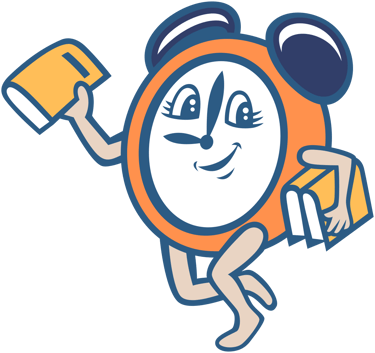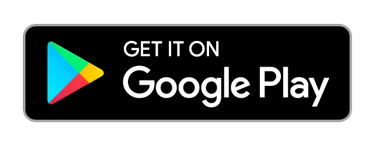Top 10 Dutch Words You Need for Daily Life in the Netherlands
9/5/20251 min read


Introduction to Dutch Language Basics
The Dutch language, a West Germanic language, holds significant importance in the Netherlands as well as in Belgium, Suriname, and several Caribbean territories. It is spoken by over 23 million people worldwide, making it a vital tool for effective communication within these regions. For anyone living in or visiting the Netherlands, grasping the basics of the Dutch language can greatly enhance their daily experiences and interactions.
Learning essential Dutch phrases not only facilitates convenience in daily life but also fosters deeper cultural integration. The Dutch people are known for their openness and friendliness; however, speaking even a few words in their native language can demonstrate respect and a willingness to engage. Simple greetings, polite expressions, and frequently used terms can make everyday interactions smoother and more pleasant.
Furthermore, understanding the Dutch language provides insights into the richness of the culture, traditions, and social nuances that are often embedded in everyday conversation. Even if you are not fluent, being able to communicate basic ideas can significantly improve your quality of life in the Netherlands. For instance, knowing how to order food, ask for directions, or engage in small talk can transform mundane experiences into more meaningful encounters.
In addition to personal interactions, basic Dutch comprehension aids in navigating essential services such as public transport, healthcare, and shopping. It empowers individuals to gain independence and reduces reliance on others for assistance. With these factors in mind, exploring the foundational words and phrases of the Dutch language proves essential for anyone looking to fully embrace their time in the Netherlands.
Essential Dutch Words for Everyday Interactions
When living in the Netherlands, mastering some essential Dutch words can significantly enhance daily interactions. Here are ten vital terms to familiarize yourself with, complete with pronunciation, meanings, and usage examples.
1. Hallo (hah-loh) - Meaning "Hello," this friendly greeting can be used in various situations, from meeting someone for the first time to catching up with a friend.
2. Dank u wel (dank oo vel) - This phrase translates to "Thank you." It is crucial for expressing gratitude when receiving help or services.
3. Alsjeblieft (als-ye-bliift) - Meaning "Please," this word is essential when making requests or asking for something politely.
4. Ja (yah) - "Yes," a straightforward affirmation that is widely used in conversations. It is important for confirming agreements.
5. Nee (nay) - This simply means "No." It serves to decline offers or express disagreement during discussions.
6. Hoe gaat het? (hoo gaat hut) - This phrase means "How are you?" It is a common way to inquire about someone's well-being.
7. Waar is...? (vahr is) - Translated as "Where is...?", it is incredibly useful when asking for directions to specific places.
8. Ik begrijp het (ik buh-gryp hut) - This means "I understand it," a phrase that can affirm your comprehension during conversations.
9. Wat kost dit? (vaht kost dit) - This question means "What does this cost?" and is particularly handy when shopping.
10. Spreekt u Engels? (spraykt oo En-guhls) - Meaning "Do you speak English?", this is a useful inquiry if you need assistance in English.
By integrating these words into your daily interactions in the Netherlands, you will find it much easier to navigate your new environment and connect with locals, thereby enriching your experience.
Cultural Context of the Chosen Words
The significance of language extends far beyond mere communication; it encapsulates the cultural heritage and social fabric of a community. In the context of the Netherlands, the selected Dutch words reflect customs, social norms, and elements intrinsic to the Dutch lifestyle. For instance, the word "gezellig," which is often translated as "cozy" or "convivial," embodies the Dutch value placed on togetherness and warmth in social settings. It captures a feeling that is foundational to Dutch culture, influencing how gatherings and interactions are perceived and experienced.
Understanding the cultural context of these words enhances one’s ability to communicate effectively. For example, "fietsen," meaning "to bike," illustrates the importance of cycling not only as a practical form of transport but also as a symbol of sustainability and health consciousness widely embraced by the Dutch. Knowing when to use this word can reveal respect for local practices and encourage integration into daily life.
Additionally, the word "lekker," usually meaning "tasty" but often used to express enjoyment or something being nice, is emblematic of the Dutch approach to life, where appreciation of simple pleasures is commonplace. This word can also be used in a variety of contexts, emphasizing the need for understanding subtleties in usage; for instance, expressing enjoyment in different activities beyond food. Such nuances highlight the societal allure of embracing positivity and satisfaction.
Moreover, words like "doe maar normaal" reflect the Dutch value of humility, suggesting that one should behave in a normal or modest manner. An understanding of this phrase emphasizes the community-oriented nature of Dutch society, which prefers collective enjoyment over ostentation. Each word, therefore, is not simply a linguistic tool but a gateway to understanding the essence of Dutch culture and social dynamics.
Tips for Practicing and Using Dutch in Daily Life
As you embark on your journey to mastering the Dutch language, it is crucial to integrate practical strategies for practicing and using the vocabulary you acquire. A key component is to actively engage with the language within your everyday experiences. One effective method is to utilize language learning applications, such as Duolingo or Babbel, which allow you to practice vocabulary and grammar in manageable, interactive sessions. These platforms often include gamified elements that make the learning process enjoyable and less daunting.
Another great way to enhance your Dutch skills is by watching Dutch television shows and movies, as well as listening to local music and podcasts. This exposes you to the language as it is naturally spoken, helps you understand pronunciation, and familiarizes you with various dialects and slang. Subtitles in your native language can provide context without hindering your understanding of Dutch. Consider accessing streaming platforms or local radio stations to immerse yourself fully.
Conversational practice is equally important. Seek out language exchange groups, either in person or online, where you can converse with native Dutch speakers and other learners. These environments foster a supportive atmosphere where you can practice speaking without the fear of making mistakes. Additionally, participating in community events or social gatherings can help you find more opportunities to engage in conversation. If you are living in the Netherlands, don’t hesitate to initiate conversations with locals during daily activities such as shopping or dining out.
Confidence is essential in language acquisition. Embrace the mistakes and learn from them; every attempt to communicate in Dutch contributes positively to your progress. Remember that the more you practice, the more comfortable you will become. By employing these strategies and immersing yourself in the language, you will effectively enhance your Dutch vocabulary and overall fluency.
Vlug - Vocabulary Reminder
Your new vocabularies best friend
info@vlugapp.com
© 2025. All rights reserved. KVK NO.98021249



